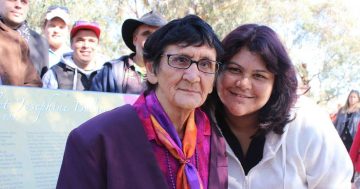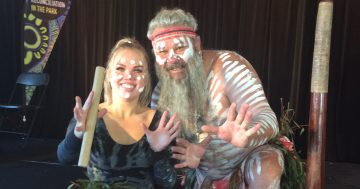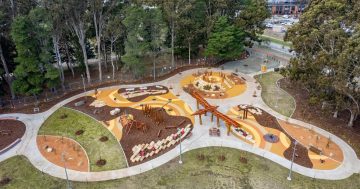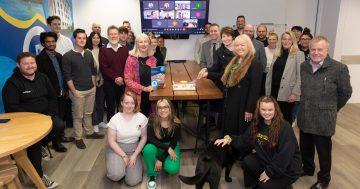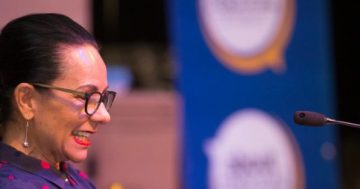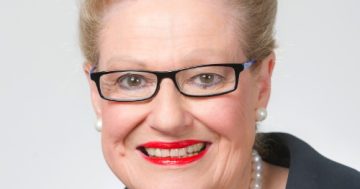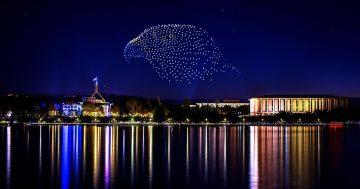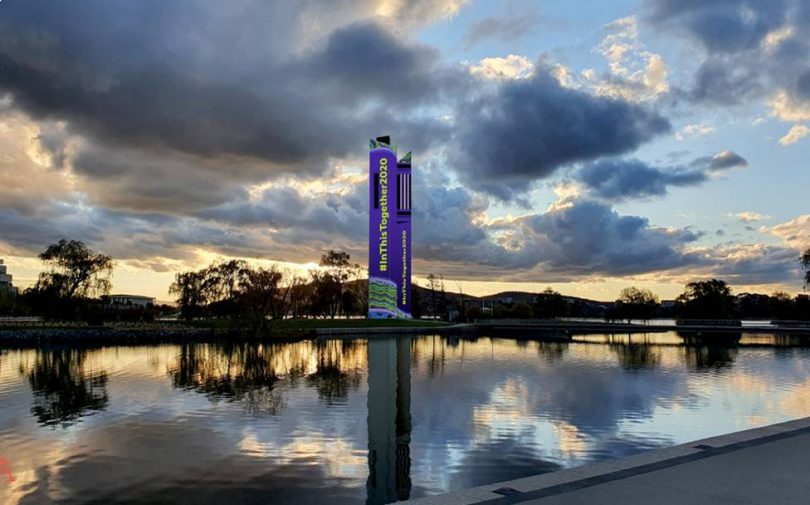
Planned artwork for the National Carillon during Reconciliation Week. Composite image: The Electric Canvas.
In these strange times, the message for Reconciliation Week (27 May to 3 June) is an apt one: in this together.
In reconciliation as in any community challenge, the message is about working cooperatively and in a spirit of friendship.
Twenty years ago huge numbers of Australians signalled exactly that with the first national bridge walks.
Unfortunately, the bridge walks can’t be replicated for this anniversary, but in a striking symbol of the same intentions, the National Carillon will light up as an electric canvas for the first time to mark Reconciliation Week 2020 in the capital.
Each night the Carillon will showcase a different image overlayed by messages about the nation’s journey to Reconciliation. The projections will run for eight nights from 6:00 pm to 11:00 pm from Wednesday, 27 May until Wednesday, 3 June 2020 and have been prepared by The Electric Canvas, who are also responsible for the Enlighten projections.
The project is a collaboration between the National Capital Authority and various community stakeholders including the ACT’s Reconciliation Council, the United Ngunnawal Elders Council and Ngunnawal traditional owners, members of Canberra’s Aboriginal and Torres Strait Islander communities, Australians for Native Title and Reconciliation, and Reconciliation Australia.
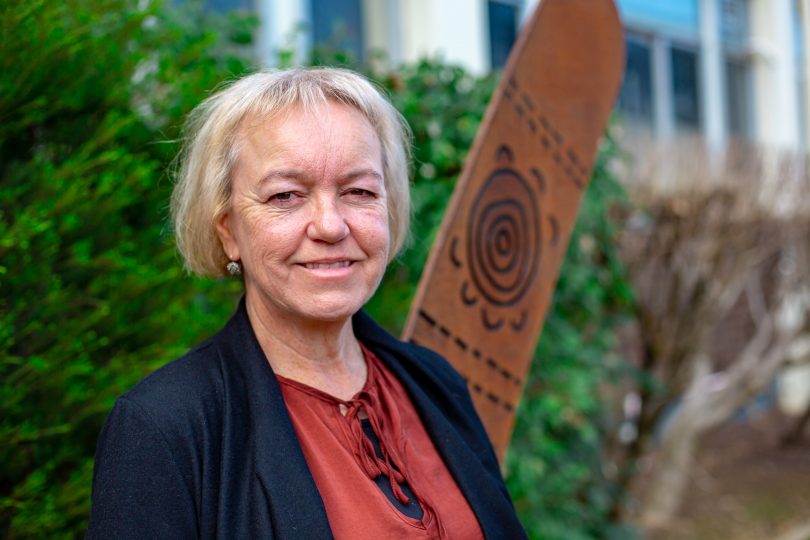
Ngunnawal traditional owner Caroline Hughes of the Yurauna Centre at CIT. Photo: File.
It’s been pulled together with great goodwill after COVID-19 restrictions forced the cancellation of Reconciliation Week activities. Over the past two years, Canberrans have marked the Reconciliation Day public holiday with large gatherings in Glebe Park and community activities, but this year has required some innovative thinking, which is where the Carillon comes in.
NCA chair Terry Weber says the Carillon is an iconic Canberra and national landmark, and that lighting it up will send a strong message across the country.
“These are powerful messages and images and I would like to personally thank everyone for their contribution to this important project. We hope the nation enjoys seeing these messages against the backdrop of Lake Burley Griffin,” he said.
ACT Reconciliation Council co-chair Chris Bourke says the collaborative effort from across the community has been remarkable on a very short space of time. “So many people stepped up to work on our Reconciliation Week project across Canberra, including the Ngunnawal people and their Elders Council, Aboriginal and Torres Strait Islander people and many others.
“The Council is focussed on encouraging Canberrans to have conversations about reconciliation in the homes, workplaces, schools or and wherever they find themselves in these COVID-19 times”.
The projections include images of reconciliation from artists Lynnice Church, Richie Allan and Nakita Ridgeway; a montage of photographs recording historic reconciliation gestures; Voice, Treaty, Truth (the three central themes from the Uluru Statement from the Heart); the Sea of Hands used by Australians for Native Title and Reconciliation; pledges developed by the ACT Reconciliation Council; Ngunnawal language images and narrative created by traditional owners; a montage of the Australian Flag, Aboriginal Flag, Torres Strait Island Flag; and, for Mabo Day, artist Gordon Bennett’s portrait of Eddie Mabo.

Lynnice Church’s commissioned artwork for Reconciliation. Image: Supplied.
Lynnice Church says that her work, commissioned for Reconciliation Week last year, uses what she calls her Canberra colours, “the blues of the Brindabellas, the purples and greens, the beautiful colours we see around us.
“The meaning of the work is coming together, having conversations about what reconciliation is and putting it into action”, she says. “For me its means to bring people together for conversation and truly understanding what reconciliation means, not just for one day but every day between Aboriginal and non-Aboriginal people”.
Lynnice’s family are Nugunnawal, Wiradjuri and Kamilaroi, and she pays tribute to the Ngunnawal elders who have supported and guided her work. “I paint the things that I understand and know through my upbringing and culture, and make sure that my artwork reflects the stories that I’ve been taught”, she says.
There’s been widespread input and support from many other community groups including the Australian Institute of Aboriginal and Torres Strait Islander Studies, the ACT Aboriginal and Torres Strait Islander Elected Body, Gail Mabo and the National Portrait Gallery, the Office for Aboriginal and Torres Strait Islander Affairs, the Torres Strait Island Regional Council, the Winanggaay Language Group, and Yurauna Centre at CIT.
“It’s been a privilege to work with all the various organisations in assembling this project. This has been a true collaboration by all involved. While COVID-19 has made this year’s National Reconciliation Week a difficult one for outside events, this series of projections allows the messages of Reconciliation to be shared by all,” said Suzanne Hannema, Director of Events and Activations at the NCA.
Genevieve Jacobs is the co-chair of the ACT Reconciliation Council.












